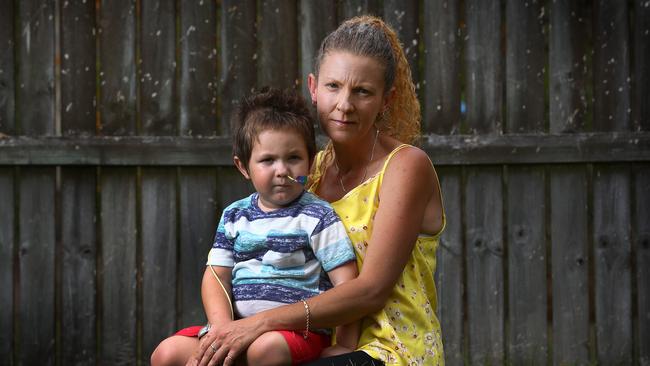Childhood cancer: More kids diagnosed but mortality rate falls 38% in past two decades
Childhood cancer rates are rising in Australia, with hundreds of children diagnosed annually. But there is some good news for parents.
QLD News
Don't miss out on the headlines from QLD News. Followed categories will be added to My News.
CHILDHOOD cancer rates are rising in Australia, but mortality rates have fallen by 38 per cent in the past two decades, new Cancer Council Queensland figures show.
Close to 770 children aged 14 and under are diagnosed with cancer annually in Australia, and 100 die from the disease. While there has been a lot of success in treating many cancers, survival rates for some brain and liver cancers have seen little improvement.
New data from the Australian Childhood Cancer Registry, which is independently managed and funded by Cancer Council Queensland, has been released today for International Childhood Cancer Day.
Cancer Council Queensland chief Chris McMillan said the findings reinforced the need for more research to help reduce the burden of the disease on children.
“The incidence rate of childhood cancer rose by 34 per cent in the 33 years between 1983 and 2015,” Ms McMillan said.
“Leukaemias are the most common type of cancer diagnosed among Australian children, accounting for about one-third of all cases.”
Dad of two given six months to live with aggressive blood cancer, survives after a Qld medical trial

Ms McMillan said while cancer remains the leading cause of disease-related deaths in children over the age of one, survival rates are significantly improving.
“Five-year relative survival for childhood cancer has continued to improve over the past three decades in Australia, with large improvements observed for children with several types of cancer,” Ms McMillan said.
“However, there is still work to be done, with little or no improvement in survival for children with some types of brain cancers or liver cancer.
“Awareness and further funding are sorely needed to secure a future in which suffering is significantly reduced for all types of childhood cancer.”
Ms McMillan encouraged all Queensland families affected by cancer to reach out for support.
“The impact of childhood cancer goes far beyond the numbers. It’s a tragic moment when a family is given the news their child has cancer, and the burden goes beyond the physical — it can affect finances, emotional stability, mental health, and many social aspects of life,” she said.
Gold Coast four-year-old Slater Clifton was diagnosed at 17 months with a posterior fossa ependymoma — a malignant brain tumour.
“Doctors have said that at best, Slater has a 20 per cent chance of making it to the age of seven. That prognosis is devastating,” his mum, Bianca Walker, said.
“The tumour is still there and still quite large as doctors were able to remove only 80 per cent. His little body has been ravaged by intense chemotherapy.
“While it is fantastic to hear that childhood cancer survival rates are improving, brain cancer needs more research and funding. I will never give up hope that a cure will be found for him in time. Hope is all I have.”


